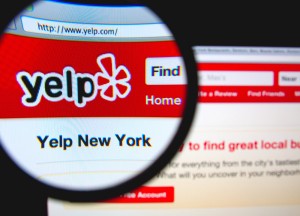
For the last decade, retailers have all followed a very similar strategy: collect as many email addresses as possible and then send them the maximum number of promotional emails they feel their subscribers will take – without unsubscribing.
Guess what? Those days are OVER.
Today, consumers are absolutely inundated with generic promotional emails – and very few are ever opened.
Why?
Simple. The information being dumped into their inbox isn’t personalized – and therefore, it’s just spam.
Stop Spamming Me!
The very fastest way to alienate your subscribers (and burn out your list) is to send them generic promotional emails – and lots of them.
Let’s be honest, this “batch ‘n blast” approach is pretty much just spam.
An example of what I’m talking about: I’m a subscriber for a fairly large online retailer and I get anywhere from 7 to 10 emails a week.
Worse than the volume of emails is that NONE of these emails are personalized to me.
Don’t you think they’d have a better chance of getting me engaged if they actually took the time to get to know what I’m interested in and then communicated with me in the channels that I use most? (in my case, mobile)
Of course they would.
You Don’t Know Me?
When I talk about personalization, I’m not referring to starting off the email with “Dear Trent,”.
Instead, I’m talking about making the content of your emails relevant to the data that you have collected about me.
I’m talking about data like:
- My browsing history
- My last purchase(s)
- Abandoned cart
- My personal preferences
- My geography
Data like this is pretty easy to collect if you are using the right tools, and you have done a good job of creating a well-crafted onboarding sequence using progressive profiling.
With a well-crafted onboarding sequence and progressive profiling in place, retailers can lay the foundation for a much more engaging relationship with their subscribers.
Meet Today’s Ninja Marketer
Ok…enough talk about what not to do, right?
How about an example of 1:1 digital marketing done correctly – along with the numbers to convince your CMO that it’s going to pay for itself.
Meet Room & Board, a 30 year old retailer that sells home furnishing. Room & Board has stores in Minneapolis, Chicago, Denver, San Francisco, New York, Atlanta, Los Angeles, Costa Mesa, Washington, D.C., Seattle, Boston, and online.
2800% ROI with Personalized Marketing
No, that’s not a typo.
In the video below, you are going to see how Room & Board achieved a 2800% ROI on their investment in the Salesforce Marketing Cloud (disclosure: I work for Salesforce) and how doing so helped them to:
- Realize a 60% increase in AOV in-store and a 40% increase in AOV online
- Use automation to drastically reduce the manual labor involved in creating promotions
- Use data to increase conversions 600%
Here’s a snippet from a case study on Room & Board that was just published.

How to Market Like Room & Board
Do you recognize the power of 1:1 digital marketing and want to emulate Room & Board, but aren’t sure how to get started?
If you don’t already have CEO buy-in and an unlimited budget, I would suggest you take baby steps.
To succeed with the type of marketing Room & Board is doing, you will want to begin by focusing on two key areas:
- Data collection
- Customer journeys
Implicit and Explicit Data Collection
Engaging customer journeys start with knowing what people are interested in. Get that part right, and the rest is a lot easier.
For the purposes of this discussion, there are two types of data that we need be concerned with: what you tell me (explicit) and your behavior (implicit).
Explicit Data
To collect explicit data, once a website visitor becomes a subscriber, redirect them to a preferences page and then use this page to ask them what they want to hear about.
One thing to be careful of is asking for too much data up front. Instead, you’ll have far greater success by asking for the most important stuff first, and then using progressive profiling to ask them more over time.
Examples of things you might ask include:
- Product style preferences
- Product category preferences
- Where they live
- How often they’d like to receive messages
- What channels/devices they would like to receive these messages on
Implicit Data
Collecting and using implicit data is something that Room & Board has gotten very good at doing.
Implicit data is the type of data that you collect by tracking what individual consumer’s behavior.
Things like:
- Browsing history
- Emails opened
- Links clicked
- Products purchased
Using this type of data, in my opinion, is where the real opportunities lie because you can use this type of data to ensure that you are sending the right message to the right person at the right time.
Customer Journeys
If you want to maximize engagement with your subscribers, simply sending them promotional emails isn’t going to get it done.
Instead, you are going to need to create customer journeys that leverage the data I talked about.
When you combine the power of data with customer journeys, the content you send it going to be so much more relevant – and that is going to help you realize substantial increases in engagement and conversions, just as it did for Room & Board.
So what should you create journeys for? Just about anything you can think of.
Here’s a few ideas to get your mind going:
- Acquisition
- Onboarding
- Engagement
- Advocacy
Now here’s the really cool thing about customer journeys: they can be created in such a way as to be unique to each person! That is why the data is so important.
Without the implicit & explicit data, all you can do is send generic promotional messages and hope for the best – something that you probably already know doesn’t work as well as it used to.
Once you have mastered collecting data on the customer journey, I suggest you move into cross-channel journeys.
Multiple Channel Journeys
Once you have laid a solid foundation using what I’ve described above, I would encourage you to expand into more than one channel.
The channels I’m referring to are:
- Web
- Email
- Mobile
- Social
Social is very powerful for acquisition and customer service.
Mobile is another very powerful channel because the vast majority of your subscribers probably read your emails on their phone. Why not offer them the ability to receive SMS or Push notifications? There many use cases for this.
Digital & Social Articles on Business 2 Community
(112)





